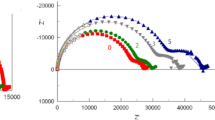Summary
The analytical methods, which give information directly or at least at a speed corresponding to the technology about the momentary composition of the steel bath, are indispensable for the optimization of the metallurgical processes. Especially the determination of oxygen concentration plays a very important role among the socalled quick analytical methods.
The sources of reoxidation have the most serious pernicious effect, because the oxygen level of steel increases again for the effect of reoxidation after the deoxidation.
The determination of oxygen content of the samples taken from the steel bath by means of classical method is not suitable for controlling the metallurgical processes, because the time necessary for the traditional analytical methods is unfavourably long and they measure the total oxygen content of the steel bath. It is, however, more important to know the so-called disposable oxygen concentration, for controlling the metallurgical reactions.
The principle of determining the active oxygen content is the measurement of the electromotive force of the solid ZrO2 electrolyte cell. The possibility of the direct measurement of active oxygen content seems to be a “milestone” in adjusting the oxygen level of the metallurgical processes, and by this influencing favourable the morphology of the nonmetallic inclusions of steel to improve the quality of steel.
The quantity of Al necessary theoretically for the final deoxidation, if the oxygen level is known, is not enough, but it is important to know the quantity of the dissolved Al, too. Therefore, it became necessary to work out such methods which determine the Al content after a very quick dissolution by means of atomic absorption spectrometry, or photometry and the period of determination is some minutes only.
The development of the inclusion–separation methods is considered also very important, because it completes the analytical examinations controlling and following the steelmaking technology with valuable data.
Similar content being viewed by others
References
G. R. Fitterer, J. Met.18, 961 (1966).
E. Förster and H. Richter, Radex-Rundschau3, 174 (1970).
J. P. Carlens, Iron and Steel Intern. June 1982. p. 141.
Author information
Authors and Affiliations
Rights and permissions
About this article
Cite this article
Vorsatz, B., Károly, G. & Kirnerné-Kiss, A. Analytical possibilities for determining the demand for the optimal quantity of deoxidants influencing favourably the morphology of nonmetallic inclusions in steels. Mikrochim Acta 86, 51–58 (1985). https://doi.org/10.1007/BF01203006
Received:
Issue Date:
DOI: https://doi.org/10.1007/BF01203006




